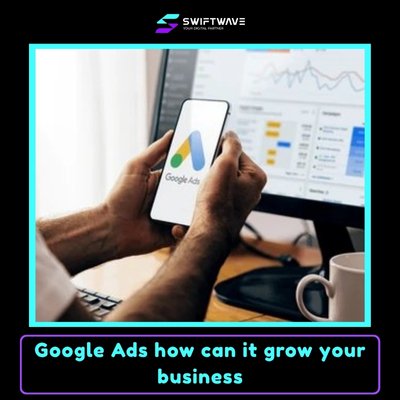SEO Strategy isn’t about stuffing keywords or chasing backlinks anymore it’s about building a system that understands how search engines think in 2025.
Google’s algorithm has shifted from simple keyword matching to intent-based and AI-driven evaluation, meaning every brand now competes not just for rankings, but for visibility inside AI Overviews, featured snippets, and conversational search results.
To stay ahead, businesses need an adaptable approach that blends data-backed content, authoritative signals, and technical precision.
The days of guessing what works are gone success now comes from measurable performance, continuous feedback loops, and clarity in execution.
This guide breaks down exactly what’s working today from topic modeling and authority building to AI alignment and optimization frameworks with real, actionable insights you can apply immediately.
Steal Our SEO Strategy for 2025
In this guide, we will explain our complete, proven SEO Strategy for 2025 that you can steal and implement step-by-step.

Pillar 1: Intent & Topic Modeling
In 2025, keyword targeting alone doesn’t drive results — understanding user intent does. The focus has shifted from chasing volume-based keywords to mapping out why users search and what they expect to achieve. This is called intent-based topic modeling.
Start by grouping related queries into topic clusters. Each cluster should revolve around a central pillar page that addresses a broad problem, supported by smaller subtopics that dive into specific aspects of that problem.
For instance, instead of targeting “SEO tools” and “keyword software” separately, create a comprehensive guide around “SEO Tools for 2025” and support it with focused articles on “AI SEO Platforms,” “Free Keyword Tools,” and “Competitor Analysis Tools.”
Next, use search intent mapping to define whether users are in an informational, navigational, commercial, or transactional phase.
This helps you decide if your content should educate, compare, or persuade. Tools like Google’s “People Also Ask,” AnswerThePublic, and Reddit threads reveal real queries that reflect this intent.
Use semantic search principles — meaning your content must cover related topics, entities, and FAQs naturally. Search engines now evaluate topic completeness instead of keyword density.
By structuring your content around user intent and related entities, you’ll improve both ranking potential and contextual visibility within AI-generated search results.
In short, successful SEO now depends on mastering what your audience needs — not just what they type. Topic modeling lets you build a stronger content ecosystem that serves intent across the full buyer journey.
Pillar 2: Authority & Signals for AI / Search Engines
Authority is no longer built through random backlinks. In 2025, search engines evaluate entity-level credibility, brand consistency, and external validation to determine which sources deserve visibility. This means you must build both human trust and machine trust.
Start with content authority signals — these are verifiable, factual indicators of credibility such as original data, research findings, industry citations, or recognized authorship.
When your website consistently publishes data-backed insights, it gets referenced by others, signaling reliability. Even AI systems like Google’s Search Generative Experience (SGE) use these signals to decide whose content appears as cited sources.
Then focus on link quality, not quantity. Backlinks from relevant, reputable domains within your niche outperform high-volume, irrelevant links. Guest posts, digital PR, expert roundups, and resource-based outreach are effective.
For example, offering data to journalists through platforms like HARO or Featured.com helps you earn editorial links that reinforce your brand entity.
Your brand mentions — even unlinked — matter too. AI models use co-occurrence and entity associations to recognize your brand as an expert in a topic. Consistent mentions across blogs, forums, and directories enhance your topical authority.
Lastly, optimize structured data such as schema markup (Article, FAQ, Review, Author). This allows search engines and AI crawlers to interpret your page structure accurately. Proper schema also increases your eligibility for rich results, improving visibility without needing more backlinks.
Authority is now a mix of credibility, relevance, and digital footprint. The goal isn’t just to appear — it’s to become trustworthy enough for algorithms to quote and feature.
Pillar 3: Content Format & Structure for Visibility
In 2025, presentation is as important as information. Readers scan; search engines parse; AI models summarize. If your content isn’t structured for both, it fails.
Modern SEO content follows a “clarity-first” layout. Start with a short, direct introduction that defines the problem, states the main idea, and previews the solution.
Use H2 and H3 subheadings that naturally include your primary and secondary search phrases. This helps both users and crawlers navigate context.
Each section should answer one key question or cover one angle. Avoid long walls of text — use short paragraphs (2–4 lines), bullet lists, and step breakdowns.
Place key definitions or statistics in bold or highlighted boxes to draw attention. These sections often get pulled into featured snippets.
Add a summary box or TL;DR at the top or end of longer guides. It increases dwell time and signals completeness. Use FAQ sections at the end to capture long-tail question queries directly.
Visual aids also matter: charts, screenshots, infographics, and embedded videos increase time-on-page and user retention. Each image should include descriptive filenames and ALT text optimized for contextual keywords.
Don’t forget internal linking. Every new piece of content should link to at least two related posts and one main pillar page. This reinforces your topic cluster and strengthens crawl paths. The result is improved internal authority flow and higher indexation rates.
Search engines reward content that’s readable, scannable, and semantically complete. Focus on structure, hierarchy, and logical flow — this is what turns words into visibility.
Pillar 4: Technical Infrastructure & UX
Even the best content won’t rank if your site fails technical health checks. Technical SEO and user experience now act as ranking multipliers. They determine how efficiently your site can be crawled, indexed, and engaged with.
Start with page speed and performance. According to Google’s Core Web Vitals, pages with faster load times (<2.5 seconds) rank higher and retain more users.
Use tools like PageSpeed Insights and GTmetrix to optimize images, enable caching, and remove unnecessary scripts. Compress CSS and JS files, and use a content delivery network (CDN) for global reach.
Ensure mobile-first optimization. Over 70% of search traffic comes from mobile devices. Use responsive design, avoid intrusive pop-ups, and ensure buttons and text remain usable on small screens.
Your site architecture should be flat and logical. Key content should be no more than three clicks from the homepage. Use breadcrumbs and clean, descriptive URLs. Implement canonical tags to prevent duplicate content, and maintain proper redirects (301 for permanent, 302 for temporary). Avoid redirect chains and broken internal links — they slow down crawlers and harm rankings.
Add HTTPS encryption, fix mixed-content errors, and keep your SSL certificate valid. Search engines prioritize secure websites.
Include an XML sitemap and robots.txt to guide crawlers effectively. Exclude low-value pages like tag archives or duplicates to prevent index bloat. Conduct regular crawl analysis to ensure new pages are being discovered and indexed correctly.
Finally, pay attention to UX metrics — bounce rate, dwell time, and click depth. A user-friendly site design reduces exits and signals relevance to algorithms. When SEO and UX align, you create a technically sound, human-centered platform that search engines trust.
Feedback Loop & Execution Process
SEO in 2025 isn’t “set and forget.” It’s an ongoing cycle of execution, measurement, and refinement. A structured feedback loop keeps your strategy alive and responsive.
Start with a baseline audit. Gather key metrics: organic traffic, average ranking position, CTR, bounce rate, backlinks, crawl errors, and content indexation. This data becomes your benchmark.
Then, plan your quarterly SEO cycles. Each quarter, analyze your top-performing clusters, identify content gaps, and review underperforming pages. Prioritize updates based on potential traffic gain and business value. Add new topics that reflect emerging trends or seasonal queries.
Implement monthly review sessions. Evaluate performance metrics using Google Search Console, Ahrefs, or SEMrush. Track keyword movement, impressions, and engagement metrics. Adjust internal links and refresh outdated statistics to maintain authority.
Perform technical maintenance every month — fix broken links, update schema, improve load times, and re-submit sitemaps. These small actions preserve site health and prevent long-term decay.
At the end of each quarter, run a competitive gap analysis. Compare your backlinks, content formats, and topical authority with competitors. If they’re gaining traction on new keywords, create better content and reclaim those positions.
Finally, summarize findings and refine your next cycle. The key principle: SEO success compounds over time, but only when you measure and adapt continuously. This feedback-driven model turns SEO from a guessing game into a predictable growth process.
Specific “Hacks” / Edge Tactics You Can Steal
-
Publish proprietary data. Run small surveys, polls, or customer research. Share insights with graphs and raw data — other sites will link to you as a source.
-
Use schema smartly. Add FAQ, HowTo, and Article schema on every post. Structured data boosts visibility in both search results and AI responses.
-
Optimize for AI summaries. Write short, factual intro summaries that directly answer the query. AI tools often use these as citation snippets.
-
Create “link magnets.” Design industry statistics pages or tools others can reference. This earns passive backlinks.
-
Leverage media mentions. Submit expert quotes to publications through platforms like HARO. Even no-follow links enhance entity recognition.
-
Repurpose content formats. Turn blogs into short LinkedIn posts, carousels, and YouTube shorts. Multi-channel visibility increases brand authority.
-
Monitor zero-click queries. Identify keywords dominated by AI Overviews and focus on adjacent, click-worthy alternatives.
-
Update content quarterly. Fresh content outperforms stale articles. Add new data, internal links, and visuals every 90 days.
-
Use author entities. Add verified author bios with credentials, links to professional profiles, and topic expertise — improves E-E-A-T (Experience, Expertise, Authoritativeness, Trust).
-
Track SERP layout shifts. Note when featured snippets or video packs appear; adjust content accordingly for those formats.
These small, practical actions create compounding visibility advantages.
What You Must Avoid (So You Don’t Waste Time)
Avoid keyword stuffing — it signals low-quality intent and hurts readability. Focus instead on contextual depth and natural phrasing.
Don’t publish thin content. Articles under 400 words with no value offer no ranking potential. Google now prefers comprehensive yet concise content with real insight.
Skip spammy backlinks. Paid, irrelevant links can trigger algorithmic filters. Invest in high-quality, contextual mentions instead.
Don’t rely solely on AI-written articles without editing. AI can help with structure, but raw output lacks factual accuracy and depth. Always human-edit for precision and tone.
Avoid neglecting UX. Pop-ups, cluttered layouts, and slow-loading pages lead to high bounce rates.
Never ignore analytics. Not tracking means you can’t improve. Use Google Search Console, Analytics, and log data regularly to find performance issues.
Finally, don’t stop updating old content. Evergreen posts decay over time. Refreshing them maintains rankings and signals ongoing authority.
By eliminating these wasteful practices, your SEO process stays efficient and sustainable.
Realistic Expectations & Timeline
SEO success doesn’t happen instantly. Results begin showing after 3–6 months, depending on competition and content velocity. Consistent publishing, optimization, and link acquisition build momentum.
- Months 1–3 focus on foundation setup: audits, technical fixes, keyword clustering, and content planning.
- Months 4–6 bring content traction: ranking improvements on long-tail terms, some backlinks, and early conversions.
- Months 6–12 deliver growth phase: pillar pages start ranking, organic traffic rises, and branded visibility improves.
- After 12 months, compounding begins — each new page strengthens your entire site through interlinking and topical authority.
Understand that SEO ROI compounds, not spikes. The payoff continues growing beyond year one, with long-term dominance achieved through iteration and consistency.
Patience and data discipline separate successful SEO teams from short-term tacticians.



